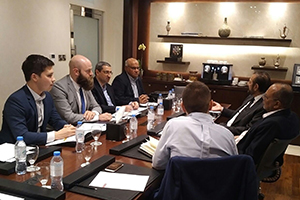The U.S. Grains Council (USGC) recently undertook a market assessment mission to the United Arab Emirates (UAE) and Pakistan to analyze the ethanol demand potential in both countries and engage with policymakers and industrial officials.
This in-country assessment followed previous research conducted by the Council to better understand the market dynamics driving the demand for ethanol.
The UAE already imports a significant amount of ethanol from the United States. With exports totaling 45.4 million gallons (16.1 million bushels in corn equivalent), it was the sixth largest market for the U.S. biofuel in 2016/2017.
“The UAE is importing ethanol, blending it into a subgrade blend stock and exporting finished fuel to countries in sub-Saharan Africa,” said Ramy H.Taieb, USGC regional director for the Middle East and North Africa. “This saves in refining costs and is more cost competitive than other oxygenates.”
The Council also discussed with regional sustainability experts the environmental and human health benefits of expanded ethanol use – both for the UAE domestic market and the markets to which the UAE is exporting finished fuel.
While in Dubai, the team met with leadership and producers from the Pakistani ethanol industry association in order to gain insights into the trade dynamic between the UAE and Pakistan. Pakistan had previously started developing a national ethanol policy, but the mandate was not binding. Pakistan also exports ethanol to the UAE, some of which is also blended and re-exported, but is primarily used for industrial uses like in perfume and printer ink.
“Missions like these allow the Council to gain an on-the-ground perspective of the markets as well as cultivate partnerships with local leaders,” Taieb said. “Strong, ongoing relationships with key individuals and organizations can be catalysts for changes in policy, trading practices, demand and U.S. market share.”
The Council continues collaborate efforts to expand the global use of ethanol, including the opportunities for future demand in the Middle East region. This market assessment is only a first step in demonstrating ethanol’s environmental and economic value, which will be followed by future exchanges of technical information and discussions on other relevant topics.
About The U.S. Grains Council
The U.S. Grains Council develops export markets for U.S. barley, corn, sorghum and related products including distiller’s dried grains with solubles (DDGS) and ethanol. With full-time presence in 28 locations, the Council operates programs in more than 50 countries and the European Union. The Council believes exports are vital to global economic development and to U.S. agriculture’s profitability. Detailed information about the Council and its programs is online at www.grains.org.

